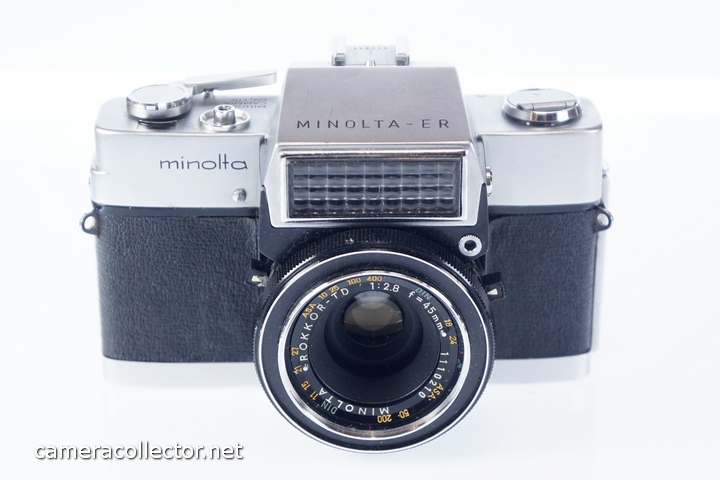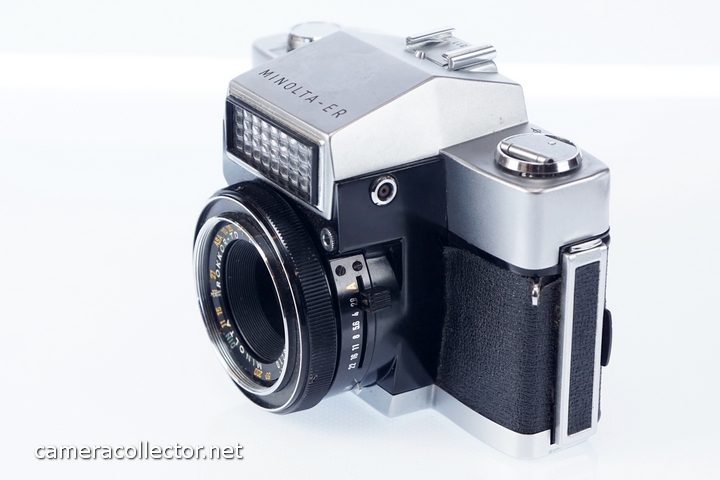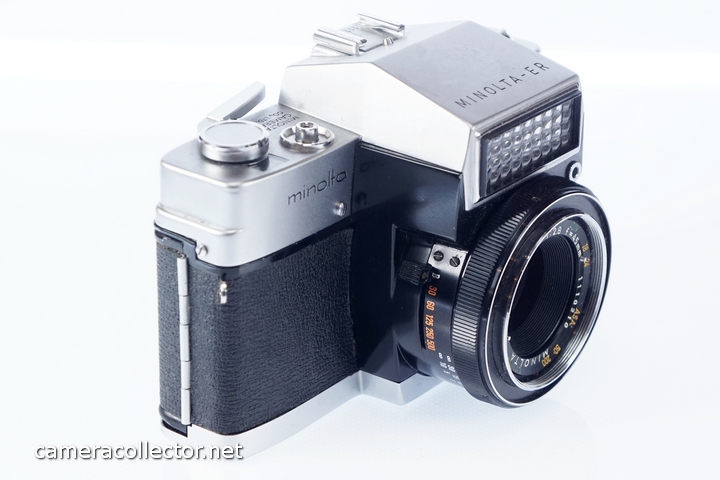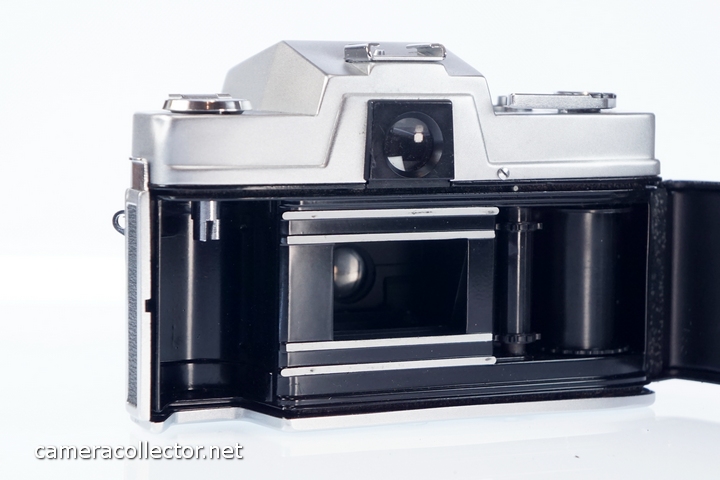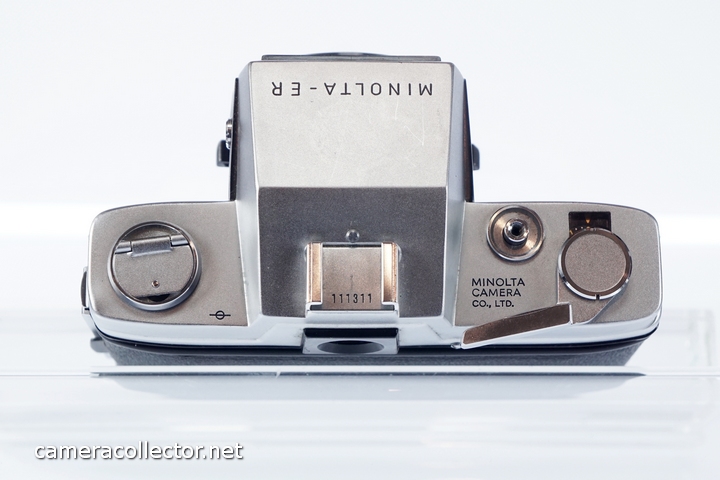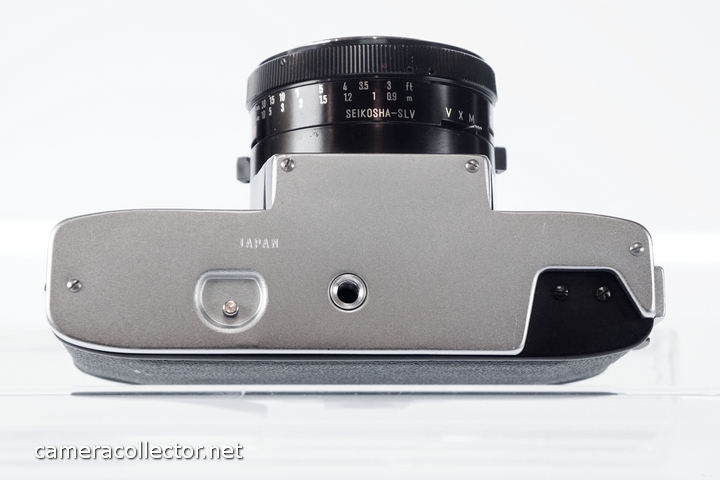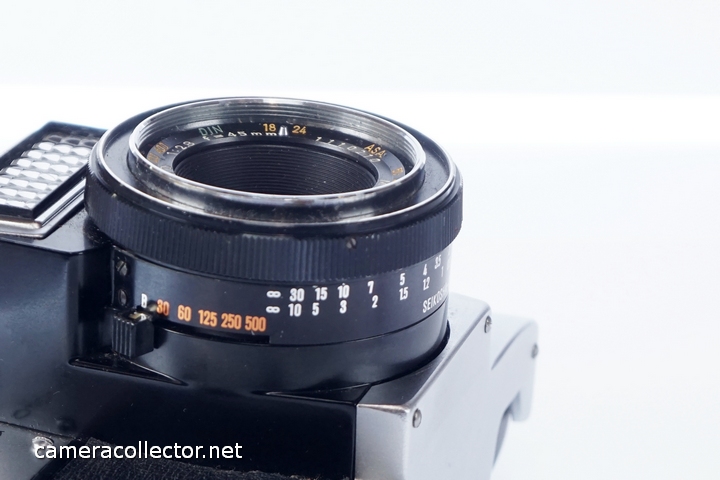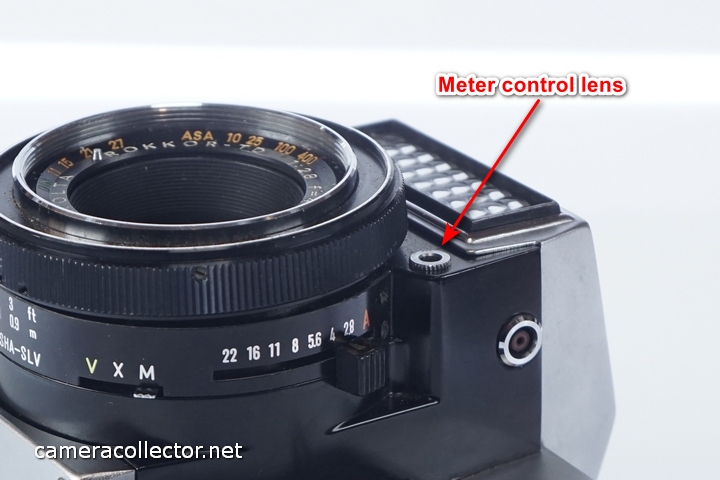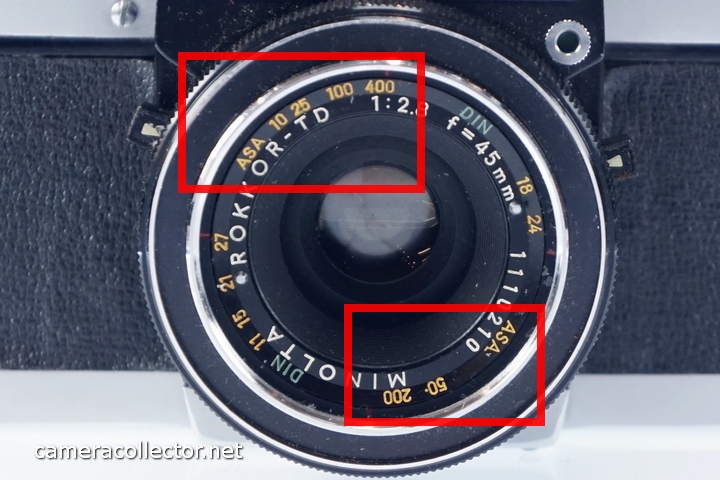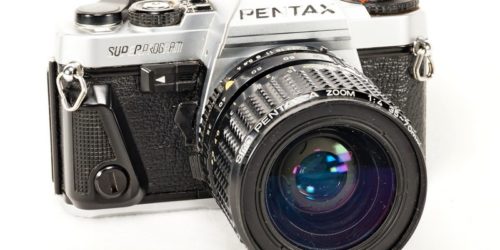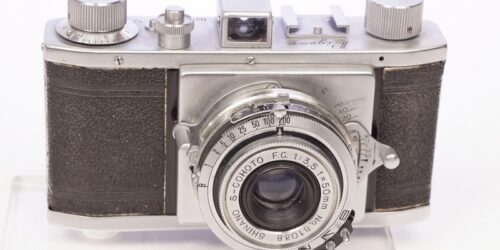Minolta ER
Minolta ER
The first compact SLR camera in 35mm format was the Ihagee Kine Exakta, introduced in 1936, which adopted the Leica interchangeable lens and focal plane shutter concept. As with other inventions, the Soviets threw their hat in, claiming the GOMZ Sport preceded it, but precise dates for both models are uncertain. Both countries were experiencing economic crises at that time, so it seems odd that the bright minds there were preoccupied with luxury items. The history of the German pre-war optical industry is well known; therefore, it is worth mentioning the two Soviet models that preceded the Sport, the Gelveta and the Filmanka, both lesser-known cameras. The compact SLR concept seemed to be the next big thing, so other camera makers jumped in, early birds were the German KW Praktiflex, Swiss Pignons Alpa, Italian Rectaflex, British Wray, and finally the Japanese Asahi Asahiflex and Tokiwa Pentaflex.
From there, the compact SLR became the standard gear for photographers, professional and amateurs alike. On the technical side, there were two schools of thought. The classic build was a body with interchangeable lenses and a focal plane shutter. This combination allowed for lens flexibility limited only by the user’s pocket depth, while keeping the body size to a minimum. The other direction was a lens-mounted shutter, with or without interchangeable lenses. The cheapest and simplest to manufacture was the lens-mounted shutter with a fixed lens, where a leaf shutter is installed as a single assembly made by a third party. Common to this style was a larger body with a pre-installed lens. Some lens mounted shutter models had added an interchangeable lens, but the overall camera size had increased. For example, the Kowa SLR and the early Contaflex models adhered to the fixed-lens school of thought, whereas the late Contaflex III and IV models introduced the interchangeable lens option. Over time, the industry, as a whole, opted for the focal plane/interchangeable lens system.
The Minolta ER features a lens-mounted shutter, paired with a fixed lens, from an era when the mainstream was yet to be defined. Made in 1963, it was one of the earliest meter-supported cameras and the only lens-mounted shutter model produced by Minolta, then Chiyoda. It was intended for export markets. The manual suggests that the name is an acronym for Electric Eye Reflex. Some cameras were marked as Minolta, while others were marked as Chiyoda Kogaku. The camera was designed for the hobbyist market, making it easy to use, as the manual suggests, “can be used from a little boy to his grandpa.”
Before this model, Minolta produced the SR compact SLR models, which were focal-plane shutter models; therefore, the ER is somewhat an anachronism.
- The camera is bulky and heavy, definitely not the take anywhere type. The heft is not an exception, as most cameras of the time subscribed to such size and weight. However, the designers could have added some fitness and softened its lines a bit.
- Where the prominent feature on most cameras is the lens assembly, here it is the mighty light meter lens, mounted proud above the prime lens.
- This camera does not require batteries and can be operated manually should the meter fail.
- The top features the lever winder, which, according to the manual, travels 220 °. In simpler terms, the winder goes all the way back plus an extra quarter circle. Later cameras introduced a gear system to address this issue.
- A cold accessory shoe and an unusual, disk-mounted rewind crank that folds back into a ring.
- The viewer is large and relatively dim, showing three-quarters of what the lens sees. A split-image focusing ring in the middle is easy to use.
- A small front window at 2 o’clock glows a green dot in the viewer once the exposure is acceptable. There is no meter needle or lighted dots (LED not yet invented) to read metered values.
- The back opens via a sliding bolt on the side, which does not click back in place when the door is closed. It needs to be pushed down to secure the lock.
- The back and bottom are uneventful.
- The inside compartment is typical of Minolta, clean and well-finished. A machined film track, dual cogs to guide the film, and a large take-off drum. A pressure plate and a guide roller are mounted on the back cover. The mirror will be down until the winder is cocked again.
- The front meter lens is the focal point that gives this camera a distinctive look.
- The settings are on both sides of the lens barrel.
- The shutter speed lever is located on the left of the barrel, ‘B’ and 30-500. The speeds are marked in red, except for the ‘B’, which is marked white as it does not participate in the auto settings.
- The aperture setting lever is located on the right side, marked ‘A’ in red for auto, and other settings in white. The red ‘A’ setting works in conjunction with the red shutter speed settings. The white settings are for manual use.
- There is a stop between B and 30, with no stops between the other shutter speeds. The shutter speeds may be stepless.
- The focusing ring is at the front, marked with meters and feet.
- The tiny lens at 2 o’clock is explained above.
- The self timer and the sync settings are at 5 o’clock, marked ‘V’ for self timer and ‘X’/’M’ for sync.
- Film speed setting is located at the front of the lens barrel, around the prime lens. Hunt for two nearly invisible pins to select the chosen value, which may require a brave fingernail. The values in ASA and DIN are scattered around the lens to maintain a readable font size.
- Available add-on lenses for the 35mm and 85mm focal lengths will affect the meter reading.
Using the camera is straightforward.
- For manual mode, set the values as desired.
- If the meter works, for shutter priority auto mode, set the shutter speed to any of the red-marked speeds and set the aperture lever to A.
- With correct exposure, the top left corner of the viewer will glow green. If it does not, change the shutter speed to match.
- I don’t know how to determine if the meter is alive. Suggestions are welcome.
- One of the online reviewers suggested setting the shutter speed before winding the film. I found no other reference or reason to do that.
- The mirror does not flip down after an exposure, but stays up. Rewind to drop it back down.
For the collector, it is a recommended model, a one-off in Minolta’s camera lineup, from an era before compact SLR models were cookie-cutter models. For the shooter, I would skip manual mode, as it is cumbersome to use, and auto mode has an iffy meter.
| Camdex list number | 5317 |
| Brand | Minolta |
| Model | ER |
| Manual | Butkus |
| Value | At camdex.ca |
| Format | 35mm |
| Introduced | 1963 |
| AKA | |
| Country | Japan |
| Qty made | |
| Initial price | 130 |
| Currency | USD |
| Type | Compact SLR |
| Body material | Metal |
| Mode | Shutter priority auto / manual |
| Weight | 880 gr, Body with lens |
| Class average weight | 800 gr, Body with lens |
| ASA range | 10-400 |
| Kit lens | 2,8/45 |
| Lens make | Rokkor |
| Filter size | 46 mm |
| Lens mount | Fixed lens |
| Mount size | N/A |
| Aperture | |
| Shutter | Leaf |
| Shutter make | Seikosha SLV |
| Trigger | On top |
| Winder | Lever |
| Shutter cocking | Winder |
| Light meter | Selenium, external, coupled |
| Lock | No |
| Speeds | B, 30-500 |
| Mirror | None auto return |
| Viewer | Fixed eye level prism |
| DOF preview | Yes |
| Exposure lock | No |
| Exposure compensation | No |
| Shoe | Cold |
| External sync | X/M |
| Sync speed | |
| Timer | Yes, mechanical |
| Battery, original | N/A |
| Battery, replacement | N/A |
| Battery voltage | N/A |
| Integral flash | None |
| Other | |
| More | |
| Service / repair links | See camerlog.com |
